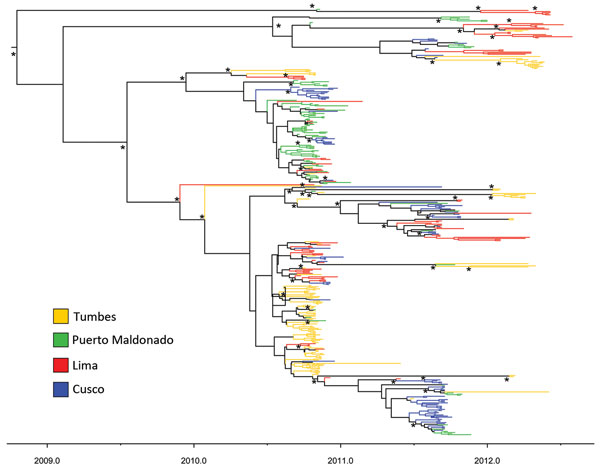Volume 21, Number 8—August 2015
Research
Phylogeography of Influenza A(H3N2) Virus in Peru, 2010–2012
Figure 3

Figure 3. Time-scaled maximum clade credibility phylogeny of hemagglutinin sequences for influenza A(H3N2) viruses from 4 locations in Peru. *Indicates posterior probabilities >0.9. Scale bar refers to year of sampling to indicate time of sampling for each virus.
Page created: July 14, 2015
Page updated: July 14, 2015
Page reviewed: July 14, 2015
The conclusions, findings, and opinions expressed by authors contributing to this journal do not necessarily reflect the official position of the U.S. Department of Health and Human Services, the Public Health Service, the Centers for Disease Control and Prevention, or the authors' affiliated institutions. Use of trade names is for identification only and does not imply endorsement by any of the groups named above.